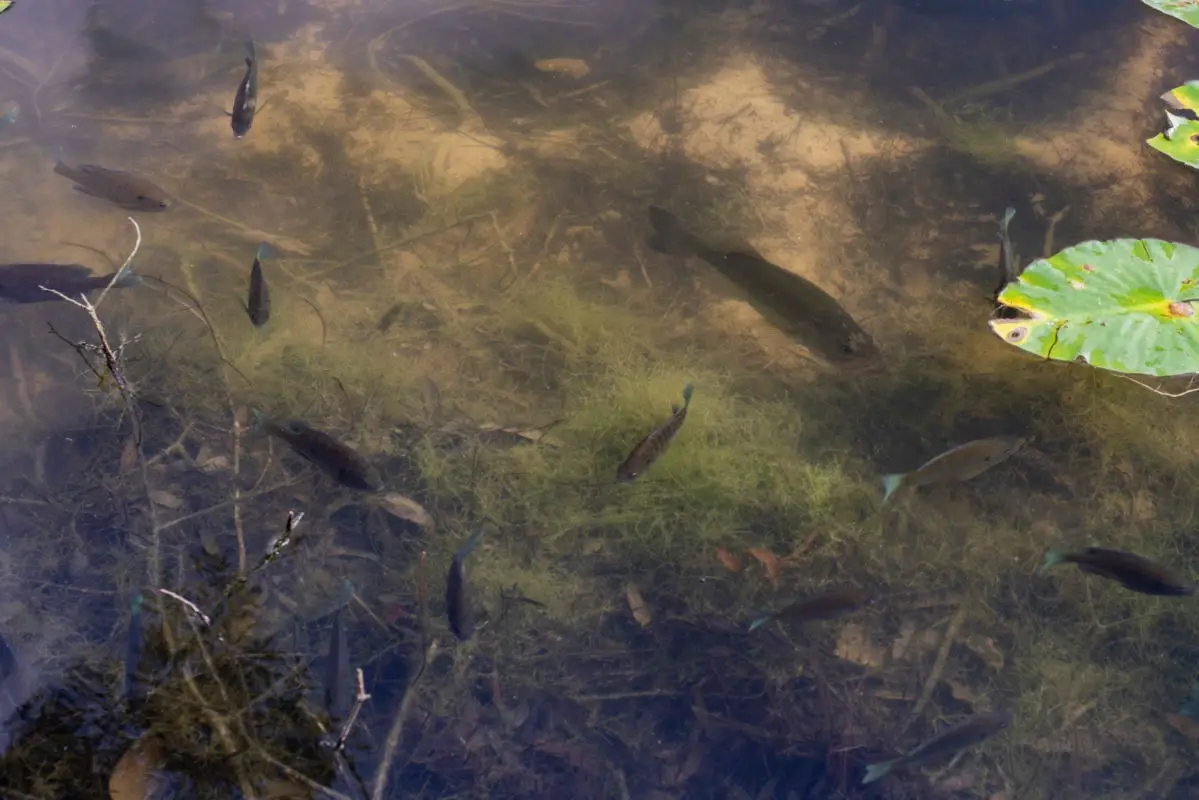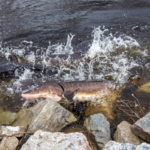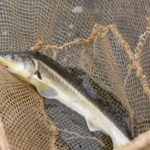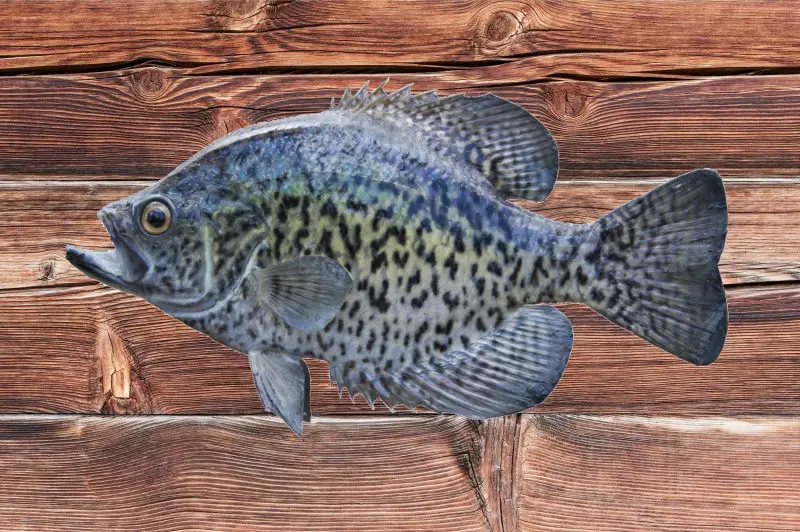Crappies are one of the most delicious and easy-to-catch panfish in North America. When you get turned on to a school of crappie, it may seem like you could fill the entire boat with them within a few hours.
Crappies make for an excellent fish fry with family and friends, and they can easily be frozen to be enjoyed during the off-season. For their relatively small size, they still do provide quite a bit of meat per fish, and they are not that difficult to fillet.
Although the summer months are the most popular for crappie fishing, you can fish crappies all year, with the peaks being in the mid-summer and mid-winter months.
Buy, many anglers who are not familiar with crappies species maybe wonder, where do crappie live? Crappie can be found mostly in the eastern part of North America. They tend to prosper in medium-depth lakes, large ponds, or slow-moving streams. There are different reasons that affect when crappie live os in this article we will break
Regions
Crappies are most commonly found throughout North America in the regions that extend from Virginia to Florida along the Atlantic Coast, in the regions along the Gulf Coast from Florida to Texas, and throughout the Mississippi River basin, the Great Lakes, and the Saint Lawrence Seaway.
All the lakes and tributary systems around the Mississippi River, the Great Lakes, and the Saint Lawrence Seaway will most likely contain crappies as well.
Habitat
Most adult Crappies can be found throughout ponds, lakes, pools, and streams. For their habitat, crappies prefer some sort of cover. Cover like vegetation, fallen trees, or rocks make a good habitat for adult crappie. Schools of Crappie often form in clear water, directly above vegetation, sand, or mud.
Do crappie like fast- or slow-moving water?
Many anglers think that you can only have good crappie fishing in lakes. That is not true. There is plenty of good crappie fishing in rivers and streams, although, crappie tend to shy away from rapids or quick-moving water.
In general, if you are fishing for crappie in a river or stream with moving water, crappies tend to prefer the slow-moving water areas. This may be an area where the water slows due to some obstructions like large boulders or logs, or it could be where a natural bend in the river causes water to pool and slow down.
Find one of these areas in the river where an obstruction slows down the water, or where a natural bend occurs, and try to slowly drift from one side of the pool of water to the other. If you need to, you can try to anchor a little upstream from where the water slows down and let your watercraft slowly drift through the target area. Crappie also like to stay in deeper parts of the river during the warm summer months and make their way shallow during the spring.
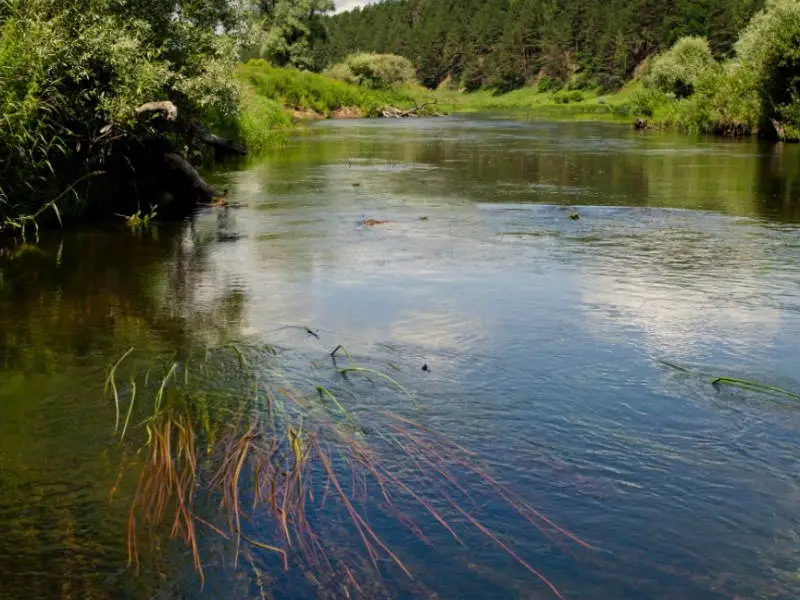
Look for calmer waters on the edge of the weed line that may mark the beginning of a drop-off. Crappies tend to school together near the weed line in order to have a quick place to run and hide from predators. This magic spot between the weed line and the drop-off may also be the border between the very slow-moving shallower waters and the faster deeper waters that crappie tend to avoid.
If you are lake fishing, remember the same idea about depth occurs just like in a river. No matter if crappie is in a river or a lake, they hate extremely warm water. The hotter it is outside, the deeper they will go to find the cooler waters that they crave.
When lake fishing, again you may want to find a weed line, a fallen tree, a submerged log, or other obstructions that give crappie excellent cover, but again, mind your depths. If it is a hot day, a fallen tree that comes from the shore that only reaches out to where there is 5-feet of water will most likely come up empty. You will want to head out deeper and look for underwater vegetation and other structure closer to the 12-to-18-foot range of depth.
Are Crappie planted?
Yes, often crappie can be planted or stocked in a lake or another body of water, however, if the body of water is not favorable to crappie survival, the crappies will not survive long.
For example, if you stock crappies in a small muddy pond with no underground springs or tributary streams to keep the flow of fresh water, there is a good chance they will not survive.
Also, people tend to try to stock all adult crappies. It is a good idea to stock young crappies as well, although many will be eaten by larger fish, stock enough to ensure some will survive.
If you are curious about the stocking of certain fish species on a particular body of water, you can go ahead and contact the state’s Department of Natural Resources or Department of Fish and Wildlife. Your state’s DNR should have all fish stocking information on record. You may even be able to put in a request for a certain fish species to be stocked on a particular lake if it has not been done in a while. The DNR may review your request, conduct some testing, and then determine whether or not that particular body of water would potentially benefit from the stocking of a certain species.
If it is a private lake with no DNR access, then you may have to ask around or see if there is a lake association of some kind. On private lakes, it is not uncommon for property owners on the lake to pool together money to pay for fish stocking. In most states, this will need approval from the appropriate department.
Can Crappie become an invasive species?
Yes, crappie can be classified as an invasive species for certain aquatic habitats. Crappies can multiply quickly, and they can migrate to far-off regions fairly easily. They also can move into an area and consume all of the smaller fish, worms, minnows, insects, and crustaceans that other fish species need to survive.
That being said, crappie, if they do become an invasive species, make excellent food for larger species of fish like the Northern Pike or Musky. If the lake or river where the crappie become overpopulated is connected to other bodies of water, larger fish will naturally migrate to the area where the crappies are located to feed.
Conclusion
If you are new to crappie fishing, or you simply are just looking for some pointers, the first thing you may want to ask is, where do crappies live? Remember, if you are located anywhere east of the Mississippi River in the United States or Canada, there is a high probability that the areas that you fish contain crappie. Crappies multiply quickly, spread rapidly, and travel sometimes great distances during their life span. Because of this, you find this species scattered throughout the US and Canada.
Remember to avoid warm water, to find the depths during the summer months, and to look for slower moving water with vegetation and other obstructions. When you find the right spot, you will know. Be prepared to pull one crappie in after another, and remember to share your spoils with your friends and family.
